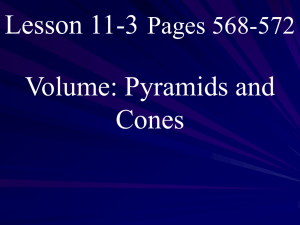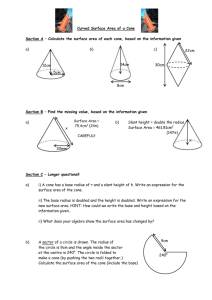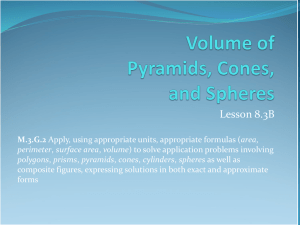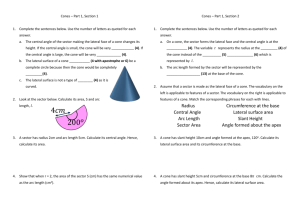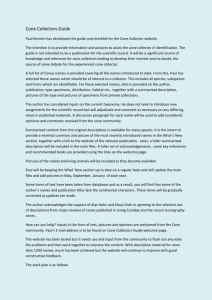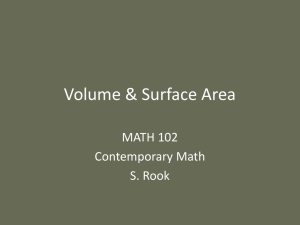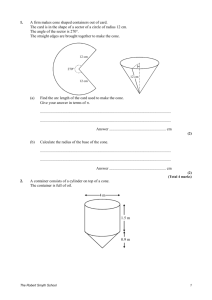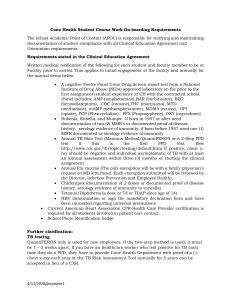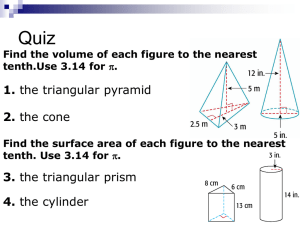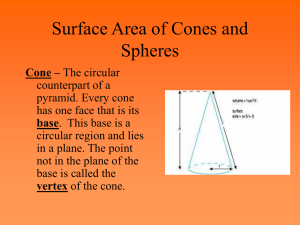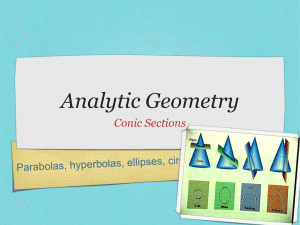Surface Area and Volume of Cones
advertisement
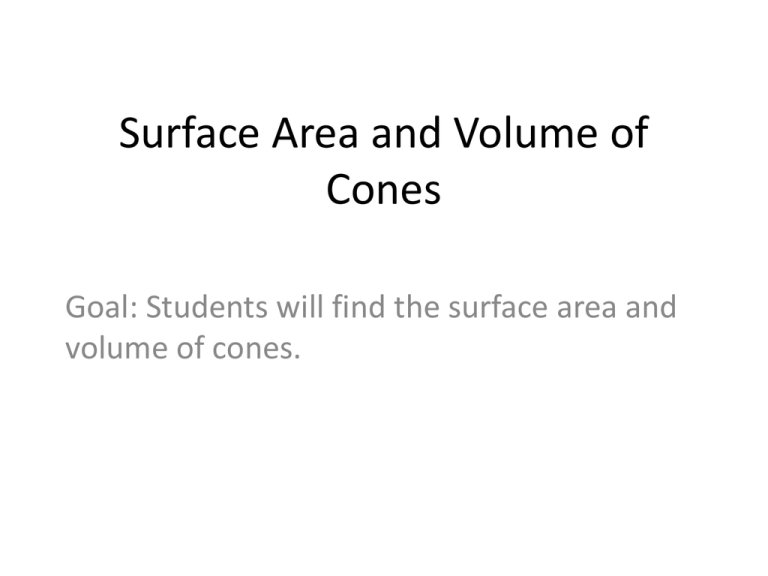
Surface Area and Volume of Cones Goal: Students will find the surface area and volume of cones. Lateral Areas and Surface Areas of Cones • A cone is like a pyramid, but its base is circular, and the vertex is not in the same plane as the base. • The radius of the base is the radius of the cone. • The height is the perpendicular distance between the vertex and the center of the base, called the altitude. • The slant height, l, is the distance between the vertex and a point on the base edge. • The lateral surface of a cone consists of all segments that connect the vertex with points on the base edge. • Theorem 12.5 Surface Area of a Right Cone: Lateral Area: LA = πrl Surface Area: S = πrl + B S = πrl + πr2 where B = Area of the Base l = slant height r = radius of cone Ex.1: The radius of the base of a cone is 6 m. Its height is 8 m. Find its lateral and surface area to the nearest tenth. Ex.2: The radius of the base of a cone is 15 cm. Its height is 20 cm. Find its surface area to the nearest tenth. Ex.3: A traffic cone can be approximated by a right cone with radius 5.7 inches and height 18 inches. Find the approximate lateral area and surface area of the traffic cone to the nearest tenth. Volume of Cones • Theorem 12.10 Volume of a Cone: 1 2 Volume: V r h 3 where h is the height of the cone r is the radius of the cone Ex.4: Find the volume of the solid. Ex.5: Find the volume of the solid. Ex.6: Find the volume of the solid. Ex.7: Find the volume of the solid shown. Ex.8: Originally, the pyramid had height 144 meters and volume 2, 226, 450 cubic meters. Find the side length of the square base. Ex.9: The volume of a right cone is 1350π cubic meters and the radius is 18 meters. Find the height of the cone. Ex.10: Find the surface area of the solid. Round to two decimal places.
